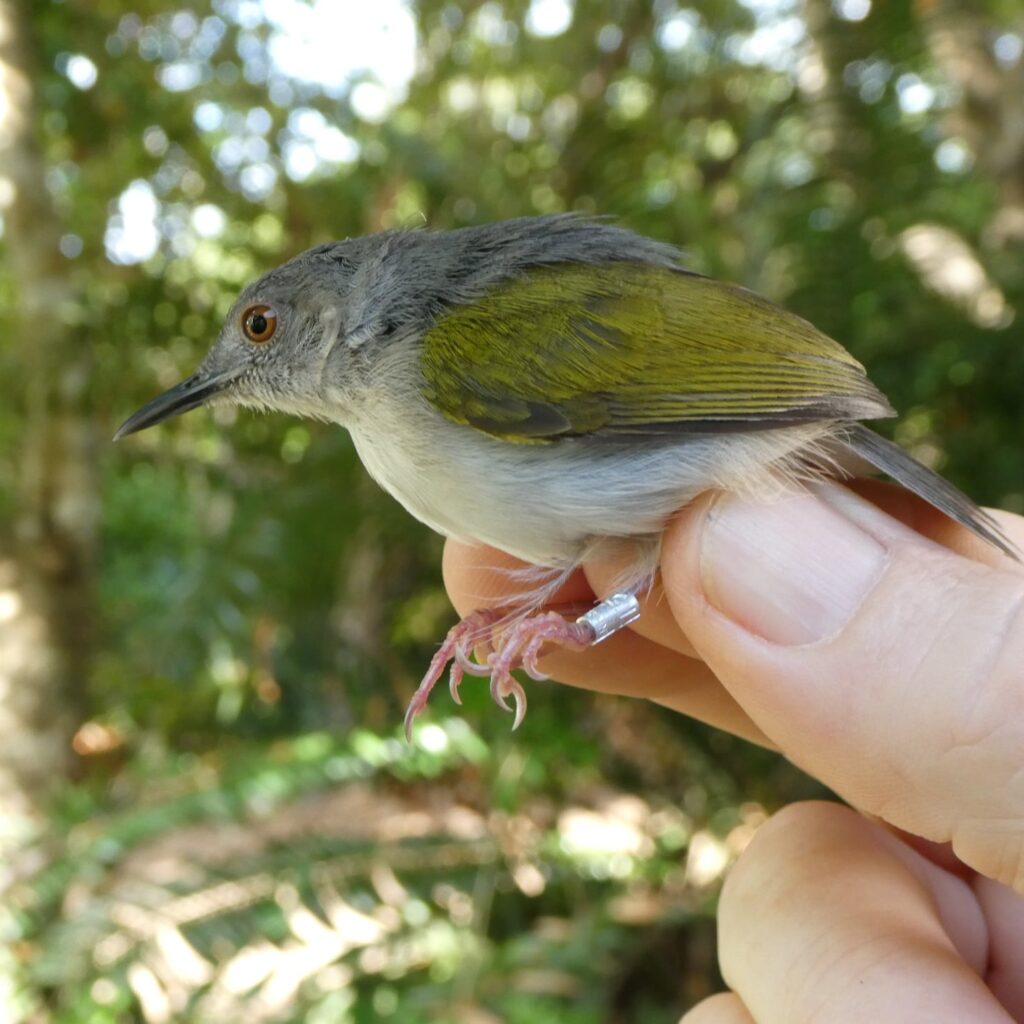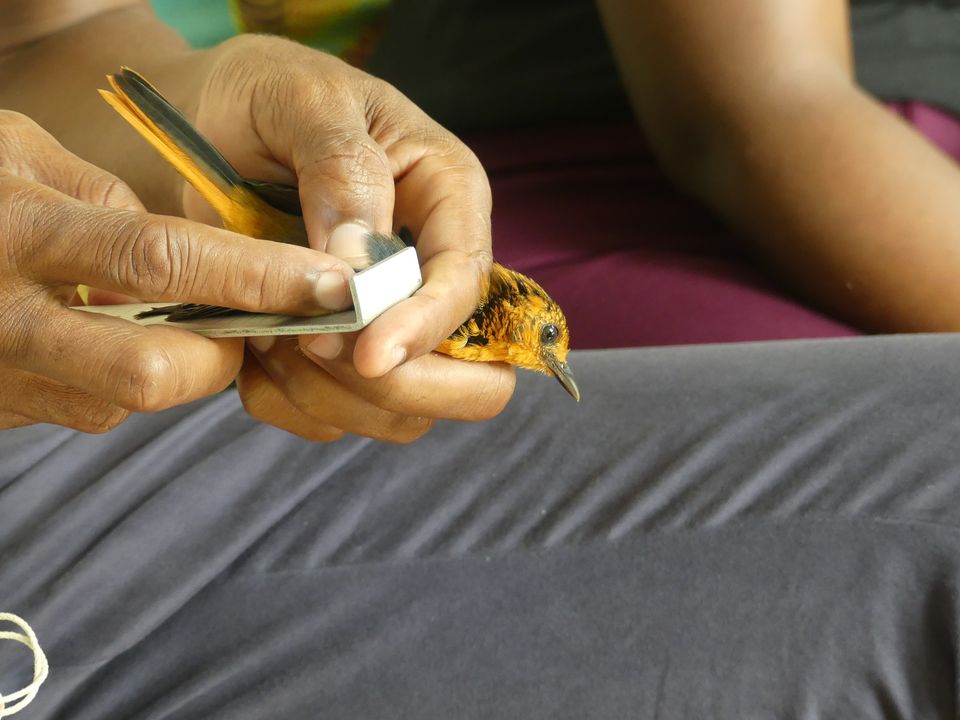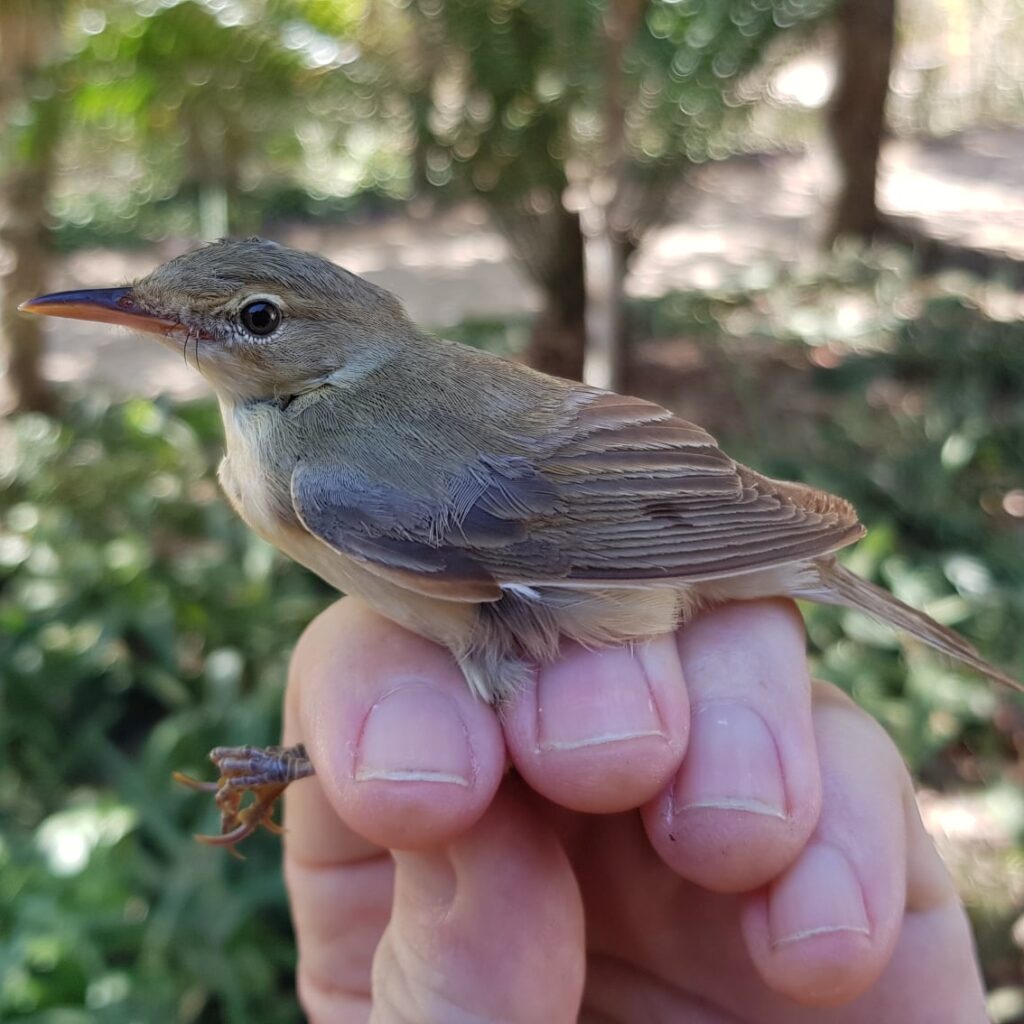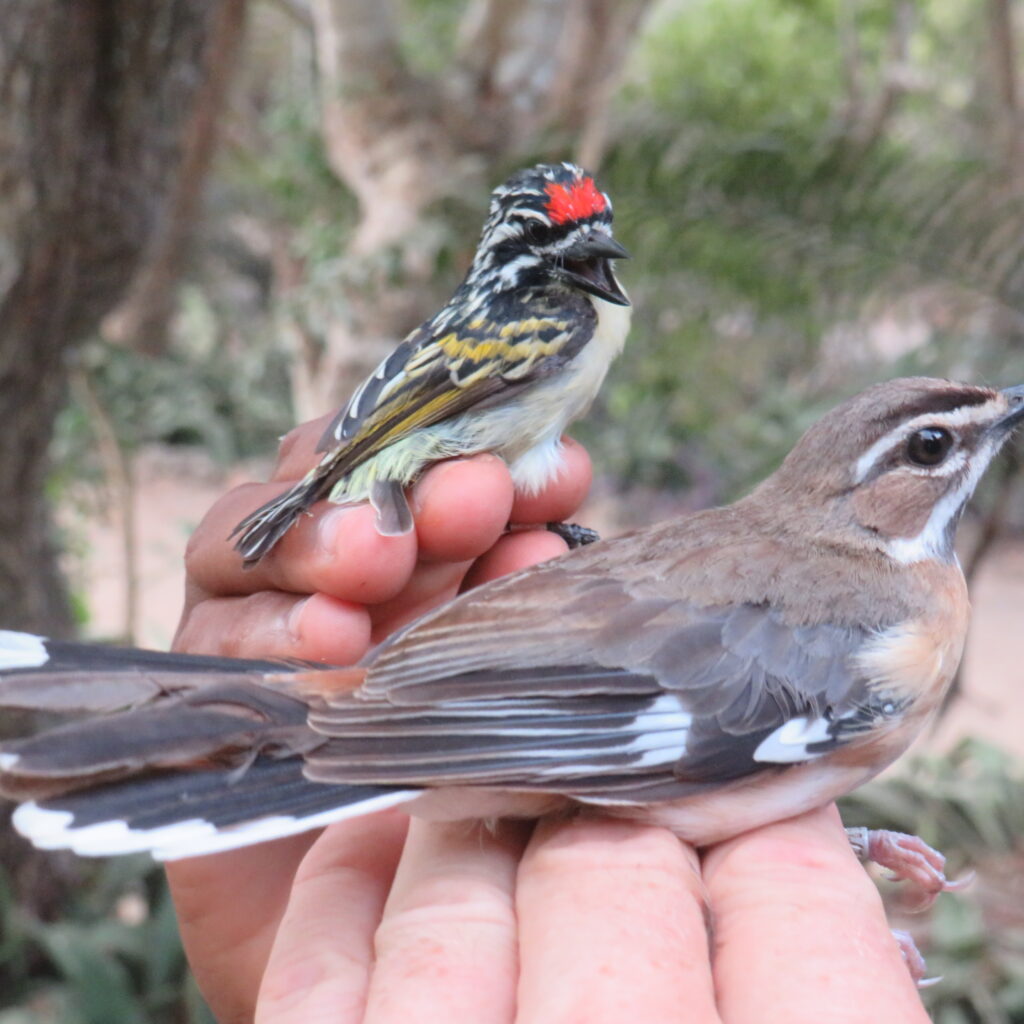Bird ringing is where we put special rings on birds that have a specific and unique number. Each ringed bird has its unique number that will not be shared by any other bird. The rings also come in different sizes, and each ring is fit to a bird according to the size of the species. The rings are made of aluminum which does not rust easily and is less dense than normal metal hence will not change the birds’ weight significantly.

Ringing is done in many parts of the world, and here in Mwamba, our ringing is usually done on Thursday. The special nets called the mist nets have been set up in our nature trail and the nets are opened very early in the morning before sunrise. The birds fly into mist nets and our team goes into the trail at intervals of about 40-60 minutes to check if birds have been trapped.
The birds captured are put in bird bags and then taken to the ringing station. The first thing that our team does is to identify the species. The bird is then given a metal ring and the number is recorded in a specially designed ringing book. The bird is then aged, important biometrics taken, and the molt and mass are recorded before it is gently released back into nature.

There are thousands of reasons why scientists ring birds, including helping to estimate the population size of the birds using the capture-recapture method. When a bird is ringed in a place, over time, one is able to estimate if the population is rising or falling. It also helps to understand the bird’s distribution where a particular species of bird is found in a certain place.
In 2021, we caught a Marsh warbler with a ring from Bulgaria. This was a huge thing for bird lovers and conservationists in understanding where birds go and the routes they follow.

Bird ringing also helps us to find out the physical condition of the birds, while holding a bird in your hand one can check closely if they are healthy or not doing so well.
The aging of birds is very important to understand how many grow to full maturity and continues breeding during their right season. Accurate aging is done during the ringing exercise, and this can also help conservationists to estimate their lifespan.
